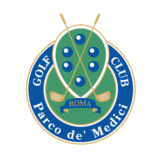GOLF IN ROME
History
Why "Parco De' Medici"?
Adjacent to it, on the opposite side of the motorway, is the historic village known as the Castello dei Papi (Castle of the Popes), which was the country residence of numerous Pontiffs during the Renaissance, in particular Pope Leo X, born Giovanni de' Medici, son of Lorenzo , whose famous painting by Raphael is preserved in the Pitti Gallery in Florence. As you can see, the residence is an architectural ensemble formed around an initial nucleus built in the second half of the 15th century under the pontificates of Sixtus IV and Innocent VIII, a residence subsequently extended by Cardinal Alidosi under Alexander VI and Julius II. Pope Alidosi's name is inscribed on the architrave of the large windows with a broken cross, reminiscent of those in Palazzo Venezia, built a few years earlier.
An architectural ensemble in which great artists of the time collaborated, including Bramante and Giuliano da Sangallo, and the great Raphael, who frescoed the apsidal basin of the Bramante Chapel, which we can see outside. Unfortunately, this fresco was stolen at the end of the 19th century and sold to France, where it is now in the Louvre Museum, exhibited among the Italian works. The building was abandoned for centuries and a few years ago became the property of the Order of Malta, which restored it and used it as the offices of the nearby hospital.
In this residence Pope Leo X lived with his court of men of letters, musicians and artists. It was therefore the memory of that fabulous period spent by the Medici Pope in this residence that suggested to the promoters of the neighbouring tourist-recreational complex to give it the name “Parco de’ Medici”.
Ten minutes by car from Fiumicino international airport, between the motorway and the Tiber river, inside the Grande Raccordo Anulare - the motorway ring that encircles the city of Rome - on an area of about 100 hectares, there is the tourist and recreational complex called "Parco de' Medici", characterised by a 27-hole golf course with a welcoming clubhouse. But let's cross the motorway again and take Viale Salvatore Rebecchini to the entrance of the golf club
The golf complex was built in 1990 - reclaiming a completely flat and barren area to accommodate what was supposed to be Rome's great seaplane airport, a project that was never completed and then finally abandoned.
The reclamation of this area is undoubtedly the most significant ecological-environmental transformation carried out in Rome after the war. More than 1 million cubic metres of earth have been moved, ponds have been created, the ground has been raised at several points to move the playground and thousands of plants have been planted. The ruins of an ancient artefact dating back to the 1st century B.C. of a small river landing on the Tiber, which at the time ran close to the artefact itself, have come to light. The Tiber was in fact the most important supply route for the city of Rome. The first harbour facilities built at the mouth of the Tiber itself were transformed in the 1st and 2nd centuries AD into two harbours: the large one called Claudius', now completely buried and used for the runways of Fiumicino airport, and the smaller, architectural, hexagonal one called Trajan's, still visible today. resume ruins, Tiber forum and Colosseum
WHERE WE ARE
Viale Salvatore Rebecchini 39, 00148 ROMA (RM)
CALL US
+39 06 65287345
golfclubpdm@sheratonparco.com
